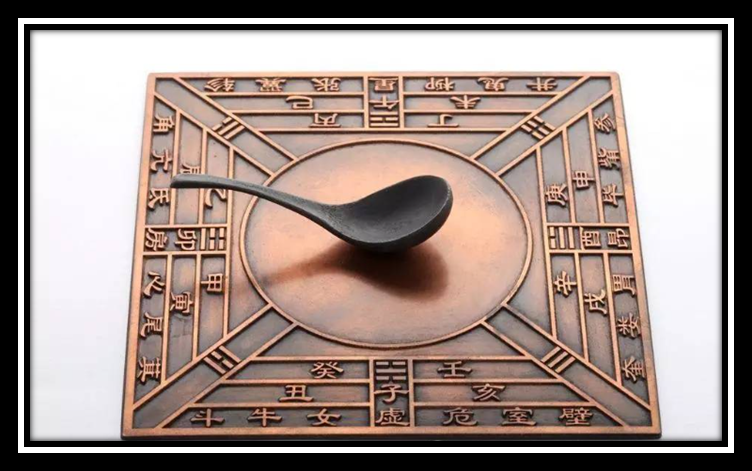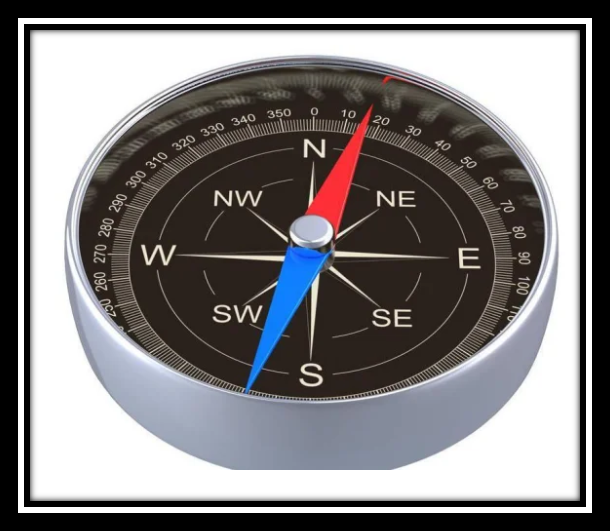Today we will learn about the compass, one of China’s four great inventions. Through the understanding of the compass, children can deepen their love for Chinese, choose Chinese learning center, and lay a good foundation for future learning.

The compass, also known as the north arrow, is mainly composed of a magnetic needle mounted on the shaft, the magnetic needle can rotate freely under the action of the natural geomagnetic field and remain in the tangent direction of the magnetic meridian, the north pole of the magnetic needle points to the geographic north pole, using this performance to identify the direction.
Compasses are commonly used in navigation, geodesy, travel, and military applications. The invention of the compass, which physically indicates the direction, consists of three parts, namely the Sinan, the compass and the magnetic needle, all of which belong to the Chinese invention.
The invention of the compass is the result of the working people’s understanding of the magnetism of objects in long-term practice. As a result of production labor, people came into contact with magnetite and began to understand the properties of magnetism.
The properties of magnet fuses were first discovered, and later the directivity of magnets was discovered. After many experiments and research, the compass with great practical value was finally invented.
The principle of indicating direction is because the Earth is a large magnet, its geomagnetic south pole is near the geographic north pole, and the geomagnetic north pole is near the geographic south pole.
The compass is subjected to magnetic force in the Earth’s magnetic field, so it will guide one end and point north at the other. And the first to answer the question of “why can a compass guide” was not Chinese, but the British scientist Gilbert.
The compass is also called the compass needle, and the introduction of Si Nan must start with a magnet. Magnets are often called “magnets”, and they suck many iron filings together, just like a kind mother attracts her children, so people call it “cishi”.
Magnets attract iron because each magnet has different magnetic poles at both ends, one end is called the positive electrode, and the other end is called the negative electrode.
The earth inhabited by humans is also a natural large magnet, the north and south ends of the earth also have different magnetic poles, the north pole of the earth is the negative magnetic pole, the south pole of the earth positive magnetic pole.

According to the principle of same-sex magnetic pole phase repulsion and heterosexual magnetic pole phase attraction, take a magnetic needle that can rotate freely, no matter where you stand on the earth, its positive pole always points north, and the negative pole is always a guide.
During the Warring States period, people used the characteristics of magnets to indicate the north and south to make a guide tool – Sinan.
However, what Si Nan looked like during the Warring States period cannot be verified. The illustration of the “History of China” textbook, “Sinan”, is based on the exhibit “The Han Dynasty Si Nan Model” exhibited by the China Museum of History.
This model was made by later generations based on historical records and physical Han Dynasty sites unearthed underground. The site is made of bronze, with an inner circle and an outer circle, and the central round face is very smoothly ground to ensure the accuracy of the spoon’s direction.
The outer periphery of the central circle is arranged in order Bagua, Tiangan, Earth Branch and Twenty-eight Suku, for a total of 24 directions.
The small spoon in the center of the site is ground with a whole piece of natural magnet, the positive pole of the magnet is ground into the long handle of Sinan, and the bottom of the spoon head is a hemispherical surface, which is very smooth.
When using, first lay the ground flat, then put Si Nan in the middle of the site, use your hand to pluck the spoon handle to make it turn, and when Si Nan stops, the direction pointed by the spoon handle is south.
This spoon-shaped sinan was still used until the eighth century. According to historical records, it was first discovered that natural magnets could attract iron, and then it was found that magnets used geomagnetic attraction to always point to the southern end, so that in the Warring States period in the third century BC, people used natural magnetite to grind into a compass called “Sinan” at that time.
He also invented a wooden man mounted on the car, with many gears in the car, and no matter how the car turned, the wooden man’s hand always pointed to the southern “guide car”.
The compass spread to Arabia around the end of the twelfth century and the beginning of the thirteenth century, and then from Arabia to Europe, and later Europe evolved into a dry compass, and then returned to China through Japan in the Ming Dynasty.
The guide’s greatest influence on the West is the embarkation of its overseas expeditions.
Combined with the planned overseas expeditions of the country at that time, as well as the cooperation of astronomy, geography, shipbuilding, and navigation technology, coupled with the use of the compass, it led to a series of overseas explorations in the West. Worldwide, the use of the compass at sea led to the subsequent discovery of the American continent by Columbus (c. 1451–1506) and Magellan’s (c. 1480–1521) circumnavigation of the globe.
This has greatly accelerated the process of world economic development and provided the indispensable prerequisites for the development of capitalism.
The compass is the result of the ancient Chinese working people’s understanding of magnetism in long-term practice. As one of the four great inventions of ancient China, its invention has played an inestimable role in the development of human science and technology and civilization.
In ancient China, the compass was first used in rituals, ceremonies, military and divination, and to determine orientation when looking at feng shui. I was deeply impressed by the wisdom of the ancients!
Chinese culture is vast and profound, interested children can try our Chinese Learning Center, where we have a dedicated teacher one-on-one customized service. Children can ask questions in the Q&A area in the Chinese Learning Center.
I hope that the children’s Chinese learning journey can be easy and enjoyable, and I look forward to meeting you~
